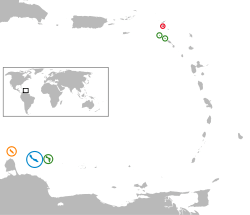List of islands of the Netherlands Antilles
.svg.png) |
| This article is part of a series on the politics and government of the Netherlands Antilles |
|
Politics portal |
.svg.png) 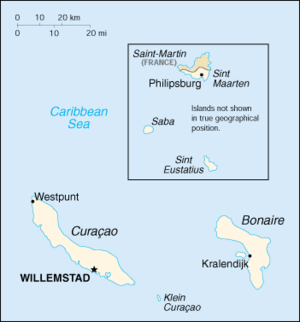 |
The Netherlands Antilles were divided into six administrative divisions, the island territories (eilandgebieden):
-
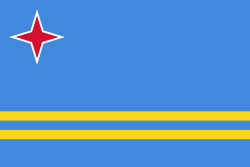 Aruba
Aruba -
 Bonaire, including an islet called Klein Bonaire ("Little Bonaire")
Bonaire, including an islet called Klein Bonaire ("Little Bonaire") -
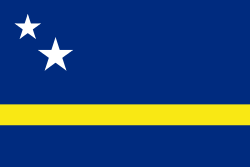 Curaçao, including an islet called Klein Curaçao ("Little Curaçao")
Curaçao, including an islet called Klein Curaçao ("Little Curaçao") -
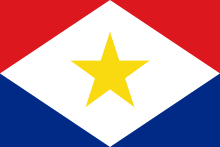 Saba
Saba -
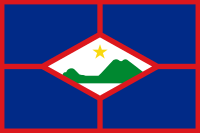 Sint Eustatius
Sint Eustatius -
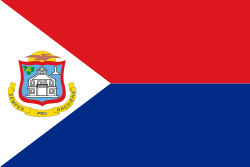 Sint Maarten, the southern half of Saint Martin island (the northern half, Saint-Martin, is an overseas collectivity of France).
Sint Maarten, the southern half of Saint Martin island (the northern half, Saint-Martin, is an overseas collectivity of France).
Aruba seceded from the Netherlands Antilles in 1986 to become a constituent country of the Kingdom of the Netherlands, to leave only five island territories.
The Netherlands Antilles were dissolved as a unified political entity on 10 October 2010, so that remaining five constituent islands each attained a new constitutional status within the Kingdom of the Netherlands. Bonaire, Saba and Sint Eustatius all became special municipalities of the Netherlands. Curaçao and Sint Maarten both became constituent countries within the Kingdom of the Netherlands.
The autonomy of the island areas was specified in the Islands Regulation of the Netherlands Antilles.
Population of the Islands
According to the official estimates of the Central Bureau of Statistics of the Netherlands Antilles, the five islands had a combined population of 199,929 as at 1 January 2009. The population of the individual islands was as follows:
|
Flag of the Kingdom of the Netherlands | |
|
Location of the Dutch Caribbean islands
| |
| Area | 999 km2 (386 sq mi) |
|---|---|
| Population (2010) | 315,339 |
| GDP (Nominal) | US$ 8.911 billion[1] |
| GDP per Capita (Nominal) | US$ 29,240[1] |
| Density | 305/km2 (790/sq mi) |
| Languages | Dutch, English, Papiamento |
| Government |
3 constituent countries 3 special municipalities |
The term Dutch Caribbean refers to all of the islands of the Kingdom of the Netherlands that are located in the Caribbean, regardless of their legal status in Dutch law, and to the inhabitants of those islands.[2][3] All the islands in the Dutch Caribbean were, at some point in history, part of the Netherlands Antilles and its predecessor the colony of Curaçao and its dependencies. The former Dutch colony of Surinam, although it was relatively close by, was not considered to be part of Dutch Caribbean as it was on the continent of South America.
History
The island of Aruba gained autonomy in 1986. Following the dissolution of the Netherlands Antilles in 2010, the islands of Curaçao and Sint Maarten also became automomous within the Kingdom of the Netherlands. The remaining islands became integrated into the Netherlands proper. Currently, there are two main divisions in the Dutch Caribbean:
- those islands that have the status of being constituent countries of the Kingdom of the Netherlands
- those islands that have the status of being special municipalities of the Netherlands alone, as distinct from the Kingdom in its entirety.
Constituent countries
There are three Caribbean islands that are countries (Dutch: landen) within the Kingdom of the Netherlands: Aruba, Curaçao, and Sint Maarten. The latter country is approximately one half of the island of Saint Martin; the remaining northern half of the island - the Collectivity of Saint Martin - is an overseas territory of France.
Special municipalities
There are three Caribbean islands that are special municipalities of the Netherlands alone: Bonaire, Sint Eustatius, and Saba. The Netherlands is the fourth constituent country in the Kingdom of the Netherlands. Collectively, these special municipalities of the Netherlands are also known as the "BES islands". There are also several smaller islands, like Klein Curaçao and Klein Bonaire, that belong to one of the island countries or special municipalities.
Grouping of islands
There are several acronyms that indicate informal groups of islands of the Dutch Caribbean:
- ABC islands, for Aruba, Bonaire, and Curaçao;
- BES islands, for Bonaire, Sint Eustatius, and Saba;
- SSS islands, for Saba, Saint Martin, and Sint Eustatius.
-

Map of the Dutch Caribbean islands.
-
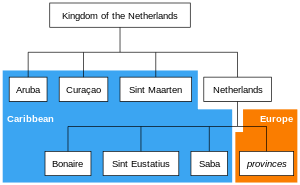
Those countries and special municipalities of the Kingdom of the Netherlands that are located in the Caribbean (blue background)
See also
References
- ↑ 1.0 1.1 COUNTRY COMPARISON GDP, Central Intelligence Agency.
- ↑ "Visa for the Dutch Caribbean". Netherlands Embassy in the United Kingdom. Retrieved 7 May 2013.
- ↑ "Rijksdienst Carbische Nederland (Rijksdienst Dutch Caribbean)". Government of the Netherlands. Retrieved 26 July 2012.
| Wikimedia Commons has media related to List of islands of the Netherlands Antilles. |
| |||||||||||||
Even though the referenda held in the early 1990s resulted in a position in favour of retaining the Netherlands Antilles, the arrangement continued to be an unhappy one. Between June 2000 and April 2005, each island of the Netherlands Antilles had a new referendum on its future status. The four options that could be voted on were the following:
- closer ties with the Netherlands
- remaining within the Netherlands Antilles
- autonomy as a country within the Kingdom of the Netherlands (status aparte)
- independence
Of the five islands, Sint Maarten and Curaçao voted for status aparte, Saba and Bonaire voted for closer ties to the Netherlands, and Sint Eustatius voted to stay within the Netherlands Antilles.
Notes
See also
- List of islands in the Caribbean
- List of Netherlands Antilles-related topics
- Netherlands Antilles
| ||||||
| ||||||||||

